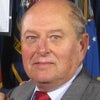Why should that question be asked unless someone can show the all-volunteer force (AVF) is not working and sustainable? A recently published book with the title Skin In the Game -- Poor Kids and Patriots, by retired Army Major General Dennis Laich, answers this question with a comprehensive analysis of the AVF and its impact on the country.
Laich focuses on three major issues: fairness, efficiency and sustainability.
He concludes the AVF is not fair because it institutionalizes poor people fighting rich men's wars. It is not efficient because it cannot be expanded rapidly to meet operational requirements. He uses the wars in Iraq and Afghanistan as evidence of this shortcoming. In his view, under our present budgetary crisis, the cost of the AVF is unsustainable because it is far too expensive. These are very troubling conclusions.
While there is no doubt the AVF has been a success in combat, has its creation caused other negative consequences? Doesn't the use of the AVF over the past 40 years demonstrate the apparent willingness of the president and Congress to be less concerned about the dire consequences of using military force, merely because they have no skin in the game?
Since the establishment of the AVF in 1973, this country has been engaged in combat operations at least ten times, on average, combat every four years. These engagements range from relatively small actions such as the invasion of Panama to undeclared wars in Iraq and the large counterinsurgency in Afghanistan.
In 1973, 73 percent of the members of Congress had served in the military. Today, that number has shrunk dramatically to only 20 percent. Even more importantly, while it is difficult to determine how many family members of our lawmakers are presently serving, the general consensus is less than 2 percent.
Like all young men of my generation, in 1966 when I turned 18, I registered for the draft with my local draft board. Besides being a legal requirement, I felt it was my duty as an American citizen. The draft or conscription had been used successfully to man the Army since the Civil War. During the Vietnam war even the Marines used the draft to fill their personnel requirements. My father, a career Army officer, a veteran of World War II and Korea, always remarked how the draftees were an added value that brought diversity to the Army.
When my father returned from Vietnam in 1969, in spite of the drug and race problems in the combat zone, he held the same opinion. By then the country had turned against the war that cost us over 58,000 American lives and countless Vietnamese. Burning of draft cards by college students and others was the most visual protest against the war. The draft became very unpopular mostly because of student and other deferments granted to the likes of Vice President Dick Cheney, presidential candidate Mitt Romney and real estate magnate Donald Trump.
In 1970, when I graduated from the Naval Academy and joined the Marines, the draft was still in effect. When Congress abolished the draft in 1973, many of my fellow Marine Lieutenants thought that doing away with conscription might prove a big mistake. While I agreed with my father's opinion that the draft brought diversity to the Army, including bringing in many with skills that would otherwise not be found in a volunteer force, I had an additional concern. Wouldn't the Army, representing the breadth of American citizenry, just turn into a large professional force like the Marine Corps? And if so, would that be in the best interest of the country? Wouldn't Congress or the president find it much easier to go to war if none of their family members or close personal friends were part of this professional force?
The history of our recent military actions suggests we young Marine officers were prescient.
General Laich is not alone in his concern about the future of our Army and its disconnect from the society it serves. Just recently, retired Army Lieutenant General Karl Eikenberry penned an Op-Ed for the New York Times where he expressed similar concerns. He adds to General Laich's analysis an additional important factor- the technological revolution. Eikenberry properly points out that technology has insulated civilians from the military. The use of drones and smart bombs makes these engagements seem more like video games then the life and death struggle they really are.
General Laich's book and General Eikenberry's opinion piece are must-reads for members of Congress and all Americans who are concerned about the impact the AVF is having on the Army. But as both of these distinguished patriots point out, the serious implications go beyond the Army. It really calls into question who we are as a nation, particularly when it comes to the decision making process that leads to combat and our future use of military force. As General Eikenberry puts it:
"The civilian-military divide erodes the sense of duty that is critical to the health of our democratic republic, where the most important office is that of the citizen. While the armed forces retool for the future, citizens cannot be mere spectators."
General Laich ends his book with another question that implies that if these issues are not addressed forthwith, it could lead to dire consequences. "What if we had a war and no one showed up on our side?"
As we wind down the war in Afghanistan, and before we enter another ground engagement, now is the time for our national leaders to address the issue of whether the AVF is working and sustainable, and if not, what is to be done? In his book, General Laich provides an answer. Don't be surprised if part of the solution is a return to a draft.

